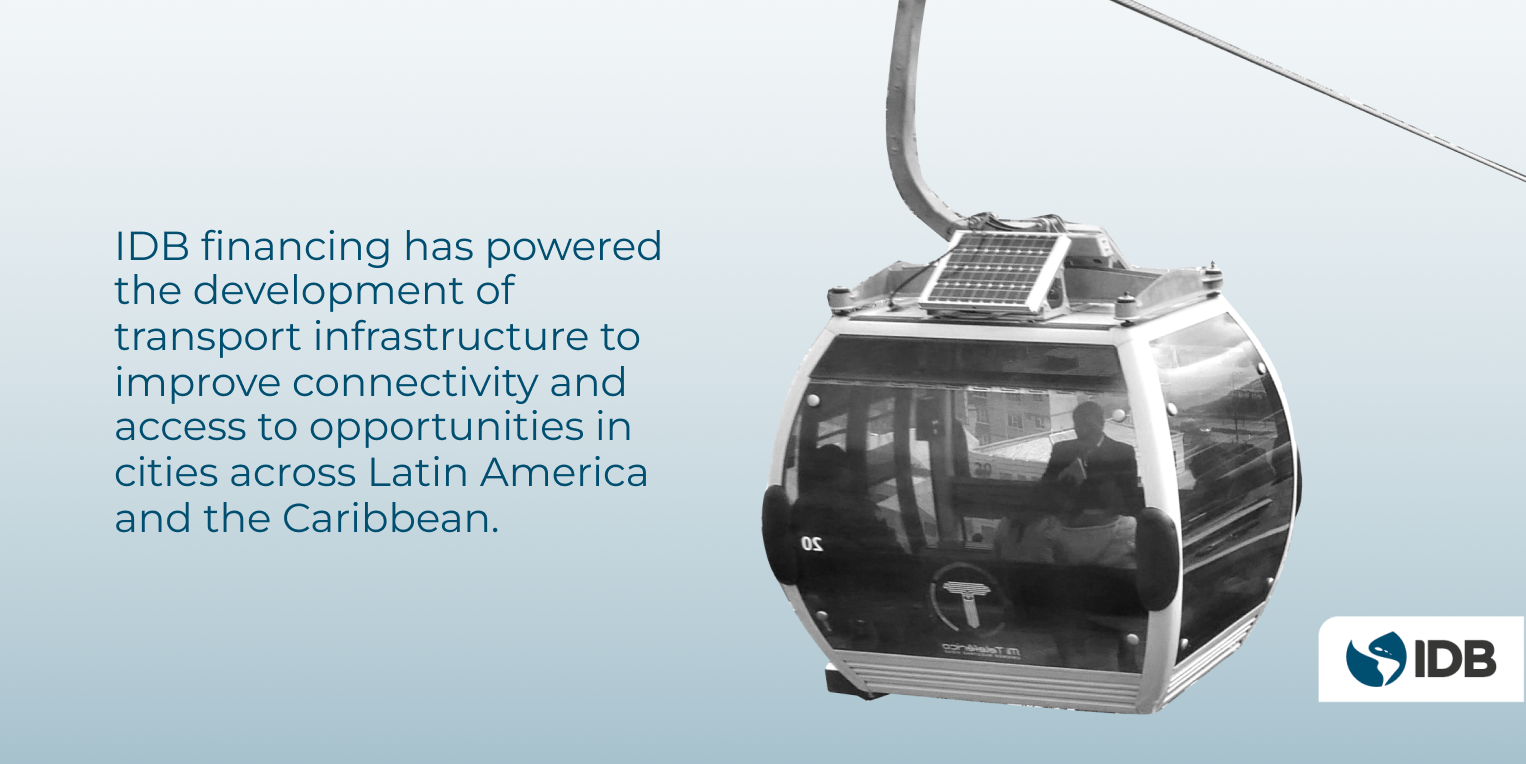Urban mobility is more than just moving people – it’s about connecting communities to opportunity, reducing inequality, and building resilience in the face of rapid urbanization. The IDB Group has long supported the development of transport infrastructure to improve connectivity and access to opportunities in cities. Between 2010 and 2024, the IDB approved 28 investment loan operations in urban mobility, totaling $3.318 billion across 24 countries. These investments have benefited approximately 4.6 million people with improved access to sustainable urban mobility.
Tailored Solutions for Complex Cities
Urban mobility projects in Latin America and the Caribbean (LAC) increasingly rely on rapid transit systems—such as subways, cable cars, and commuter railways—to address congestion, reduce emissions, and improve access to jobs and services. These projects typically involve civil works (e.g., tunnels, stations, yards), systems (e.g., signaling, communications, digital tools), and rolling stock. They also incorporate universal accessibility and aim to reduce GHG and particulate emissions. Many have pioneered multi-donor financing, procurement coordination under IDB leadership, and the use of international standard contracts such as the International Federation of Consulting Engineers.
In Quito, Ecuador, the city faced growing congestion and limited access to efficient public transport. The IDB supported the construction of the first metro line with $200 million in financing, including technical assistance for design and implementation. The metro offered a modern, efficient mass transit solution aligned with the city’s sustainability goals. Surveys during initial operations showed satisfaction levels above 90 percent for service quality and safety from harassment. The project exceeded emissions reduction targets, avoiding an estimated 56,978 metric tons of CO₂ in 2024. Access to jobs and services within 60 minutes increased from 45 percent to 51 percent, adding over 2,700 new opportunities for users.
In Buenos Aires, Argentina, the IDB supported the electrification of the Plaza Constitución-La Plata line of the General Roca Railway to provide a cleaner, more reliable alternative for daily commuters. The railway was the right choice given the corridor’s high demand and potential for modal shift. The project is expected to benefit 671,000 people directly and over 2.1 million indirectly. A 2017 impact evaluation found improvements in labor inclusion, with passengers reporting better punctuality and schedule management. Property values in surrounding areas increased by 15 percent, and transport safety improved with 10 fewer accidents per month. User satisfaction rose by 23 percent, reflecting gains in comfort, travel time, and perceived safety.
In La Paz and El Alto, Bolivia, steep topography and fragmented urban development posed significant mobility challenges. The IDB supported the construction of a cable-car network, which proved to be an effective solution for connecting hillside communities. The system now serves 250,000 passengers daily and indirectly benefits 2.7 million people. The IDB financed the Silver Line and is supporting the expansion of the Coffee Line. These projects include photovoltaic panels to reduce operational costs and emissions. Since its launch, the network has reduced over 2,074 tons of CO₂ and increased property values in the surrounding area by nearly 110 percent. User satisfaction remains above 87 percent. A joint IDB-IDB Invest impact evaluation found that cable car users spend less time commuting and more time on education and recreational activities, as well as on self-employment activities, potentially reflecting improved access to local labor markets.
Looking Ahead: Mobility as a Foundation for Urban Resilience
These experiences across Quito, Buenos Aires, and La Paz illustrate how tailored urban mobility solutions can do more than move people, they can reshape cities. By improving access to jobs, services, and opportunities, these projects have helped reduce inequality, enhance environmental sustainability, and strengthen social cohesion. The IDB Group’s approach—grounded in context-specific design, inclusive planning, and long-term partnerships—demonstrates that resilient urban mobility is not a one-size-fits-all solution, but a strategic investment in the future of cities.


Leave a Reply